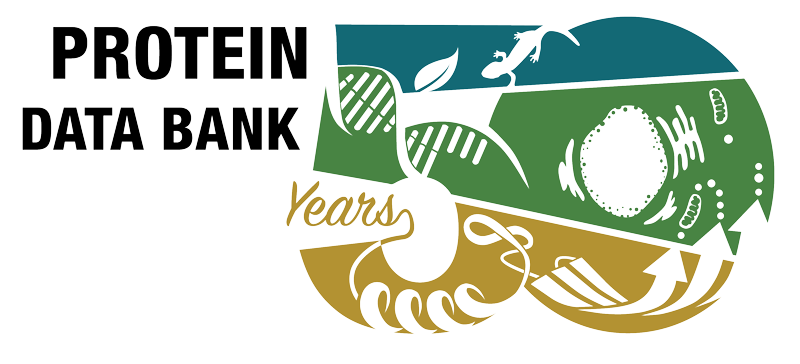Articles - 2qwf mentioned but not cited (4)
- Mapping of ligand-binding cavities in proteins. Andersson CD, Chen BY, Linusson A. Proteins 78 1408-1422 (2010)
- Combining crystallographic information and an aspherical-atom data bank in the evaluation of the electrostatic interaction energy in an enzyme-substrate complex: influenza neuraminidase inhibition. Dominiak PM, Volkov A, Dominiak AP, Jarzembska KN, Coppens P. Acta Crystallogr D Biol Crystallogr 65 485-499 (2009)
- Molecular-level simulation of pandemic influenza glycoproteins. Amaro RE, Li WW. Methods Mol Biol 819 575-594 (2012)
- Prediction of the Inhibition of Influenza Virus Neuraminidase Various Strains by Means of a Generalized Model Constructed Using the Data on the Position of Known Ligands. Mikurova AV, Rybina AV, Skvortsov VS. Biochem Mosc Suppl B Biomed Chem 15 166-170 (2021)
Reviews citing this publication (24)
- Influenza hemagglutinin and neuraminidase membrane glycoproteins. Gamblin SJ, Skehel JJ. J Biol Chem 285 28403-28409 (2010)
- Influenza neuraminidase inhibitors: antiviral action and mechanisms of resistance. McKimm-Breschkin JL. Influenza Other Respir Viruses 7 Suppl 1 25-36 (2013)
- Mutations of neuraminidase implicated in neuraminidase inhibitors resistance. Ferraris O, Lina B. J Clin Virol 41 13-19 (2008)
- Glycolysis as a target for the design of new anti-trypanosome drugs. Verlinde CL, Hannaert V, Blonski C, Willson M, Périé JJ, Fothergill-Gilmore LA, Opperdoes FR, Gelb MH, Hol WG, Michels PA. Drug Resist Updat 4 50-65 (2001)
- Entry of parainfluenza virus into cells as a target for interrupting childhood respiratory disease. Moscona A. J Clin Invest 115 1688-1698 (2005)
- Natural and synthetic sialic acid-containing inhibitors of influenza virus receptor binding. Matrosovich M, Klenk HD. Rev Med Virol 13 85-97 (2003)
- Medical management of influenza infection. Moscona A. Annu Rev Med 59 397-413 (2008)
- Influenza treatment and prophylaxis with neuraminidase inhibitors: a review. Kamali A, Holodniy M. Infect Drug Resist 6 187-198 (2013)
- Neuraminidase inhibitor resistance in influenza viruses. Reece PA. J Med Virol 79 1577-1586 (2007)
- Understanding the longevity of the beta-lactam antibiotics and of antibiotic/beta-lactamase inhibitor combinations. Buynak JD. Biochem Pharmacol 71 930-940 (2006)
- New antivirals and drug resistance. Colman PM. Annu Rev Biochem 78 95-118 (2009)
- Characteristics of human infection with avian influenza viruses and development of new antiviral agents. Liu Q, Liu DY, Yang ZQ. Acta Pharmacol Sin 34 1257-1269 (2013)
- Management of influenza virus infections with neuraminidase inhibitors: detection, incidence, and implications of drug resistance. McKimm-Breschkin JL. Treat Respir Med 4 107-116 (2005)
- Avian influenza A (H5N1) infection: targets and strategies for chemotherapeutic intervention. De Clercq E, Neyts J. Trends Pharmacol Sci 28 280-285 (2007)
- Neuraminidase inhibitors as anti-influenza virus agents. Kim CU, Chen X, Mendel DB. Antivir Chem Chemother 10 141-154 (1999)
- Recent advances in neuraminidase inhibitor development as anti-influenza drugs. Feng E, Ye D, Li J, Zhang D, Wang J, Zhao F, Hilgenfeld R, Zheng M, Jiang H, Liu H. ChemMedChem 7 1527-1536 (2012)
- Current research on influenza and other respiratory viruses: II international symposium. Munoz FM, Galasso GJ, Gwaltney JM, Hayden FG, Murphy B, Webster R, Wright P, Couch RB. Antiviral Res 46 91-124 (2000)
- Antivirals Targeting the Neuraminidase. Gubareva L, Mohan T. Cold Spring Harb Perspect Med 12 a038455 (2022)
- The Elastin Receptor Complex: An Emerging Therapeutic Target Against Age-Related Vascular Diseases. Tembely D, Henry A, Vanalderwiert L, Toussaint K, Bennasroune A, Blaise S, Sartelet H, Jaisson S, Galés C, Martiny L, Duca L, Romier-Crouzet B, Maurice P. Front Endocrinol (Lausanne) 13 815356 (2022)
- Antivirals for Respiratory Viral Infections: Problems and Prospects. Liu Q, Zhou YH, Ye F, Yang ZQ. Semin Respir Crit Care Med 37 640-646 (2016)
- Winning the arms race by improving drug discovery against mutating targets. Anderson AC. ACS Chem Biol 7 278-288 (2012)
- Approaches and strategies for the treatment of influenza virus infections. Colacino JM, Staschke KA, Laver WG. Antivir Chem Chemother 10 155-185 (1999)
- Zwitterionic structures: from physicochemical properties toward computer-aided drug designs. Yang Z, Li Q, Yang G. Future Med Chem 8 2245-2262 (2016)
- Co-infection of the respiratory epithelium, scene of complex functional interactions between viral, bacterial, and human neuraminidases. Escuret V, Terrier O. Front Microbiol 14 1137336 (2023)



 PMID:
PMID: 